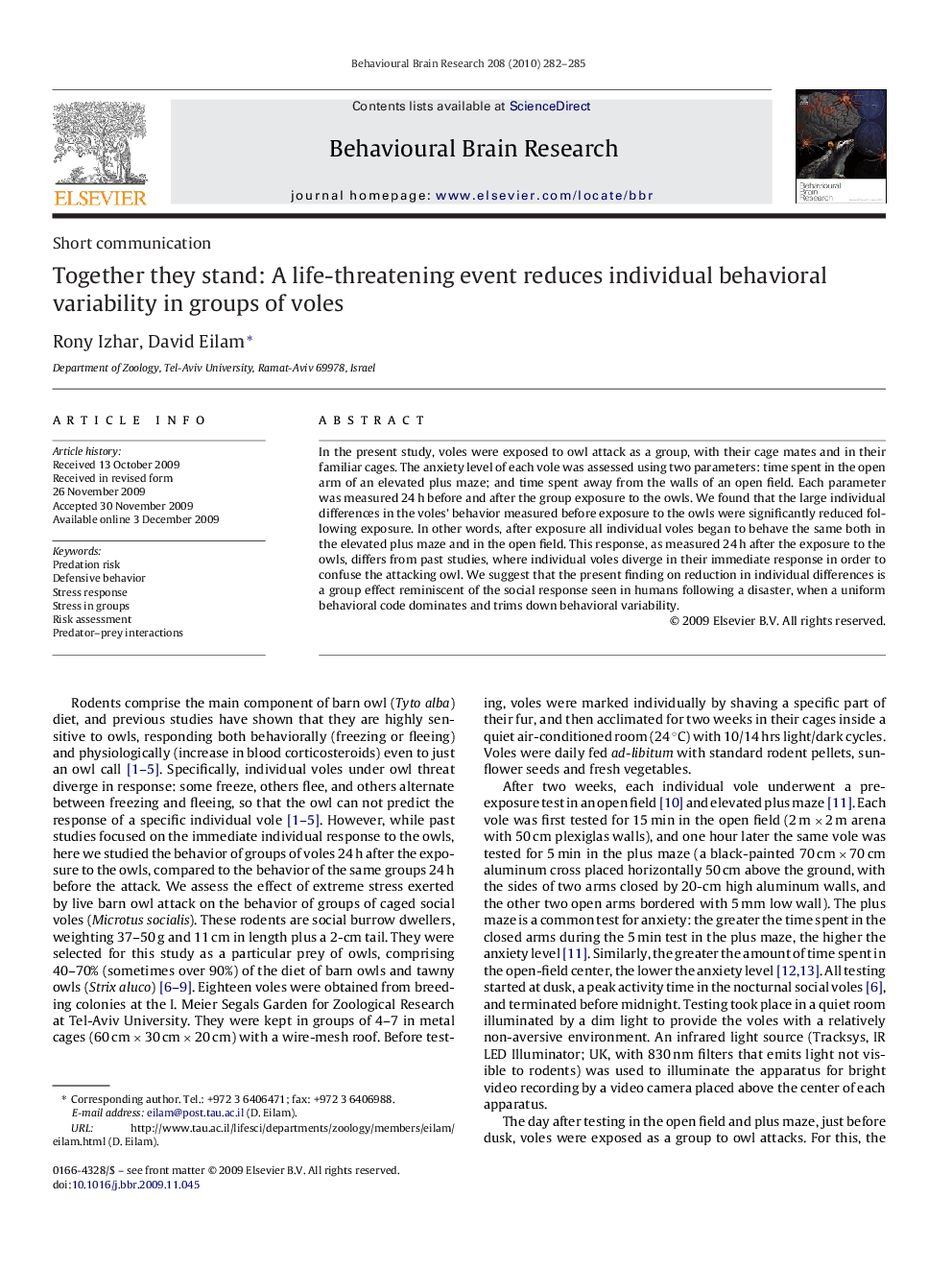| Article ID | Journal | Published Year | Pages | File Type |
|---|---|---|---|---|
| 4314310 | Behavioural Brain Research | 2010 | 4 Pages |
Abstract
In the present study, voles were exposed to owl attack as a group, with their cage mates and in their familiar cages. The anxiety level of each vole was assessed using two parameters: time spent in the open arm of an elevated plus maze; and time spent away from the walls of an open field. Each parameter was measured 24Â h before and after the group exposure to the owls. We found that the large individual differences in the voles' behavior measured before exposure to the owls were significantly reduced following exposure. In other words, after exposure all individual voles began to behave the same both in the elevated plus maze and in the open field. This response, as measured 24Â h after the exposure to the owls, differs from past studies, where individual voles diverge in their immediate response in order to confuse the attacking owl. We suggest that the present finding on reduction in individual differences is a group effect reminiscent of the social response seen in humans following a disaster, when a uniform behavioral code dominates and trims down behavioral variability.
Related Topics
Life Sciences
Neuroscience
Behavioral Neuroscience
Authors
Rony Izhar, David Eilam,
